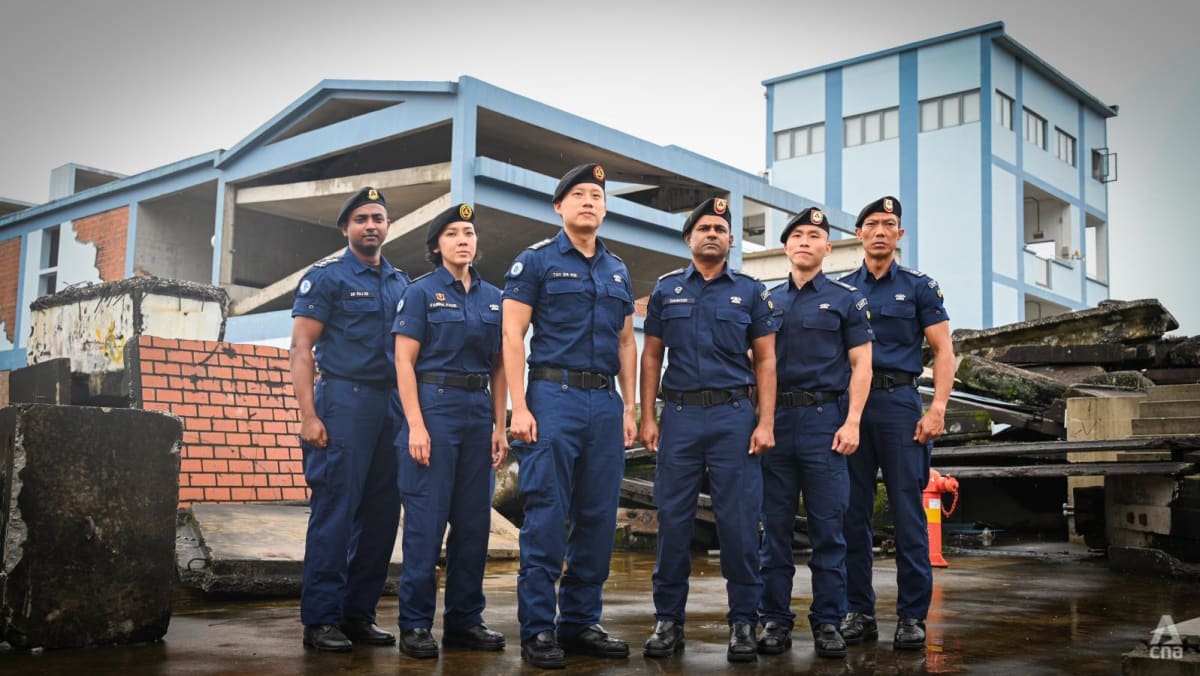ENGINEERS AND DOCTORS
During search and rescue missions, structural engineers within the team also have a crucial role to play.
Their job is to assess whether a structure is safe for rescuers to enter by looking out for telltale signs of danger, such as cracks running through walls, and examining materials that have been dug out from the buildings.
Major Ros Farina Mohd Fauzi Rodrigues, who is a civil engineer by training, spoke about an operation she was part of, which involved a collapsed building near a fallen air traffic control tower at Naypyidaw International Airport.
In this case, a body was buried under the rubble and pinned down by a heavy beam. Metal bars were already bent and out of shape, she recalled. Hence, the team did not commit to using any breaking tools but dug out the rubble by hand instead.
“This is what you do as a structural engineer. We work together with the rescuers, both our guys, as well as the fire service, to make sure that our rescuers are safe,” MAJ Farina said.
Helping out with the mission as a rescue technician was MAJ Chew Jia Han, an operationally ready NSman who holds a PhD in civil engineering. The 39-year-old said that the engineers faced their fair share of challenges, given that they were assessing the buildings based on what they could see on the surface.
“As we proceed with our operation, we might uncover something else that might improve our initial assessment to be slightly off,” he said.
When that happens, the engineers would recommend that the operation be stopped and conduct a reassessment on how to carry on safely.
Beyond search and rescue efforts, the SCDF team also established medical outposts in disaster-stricken areas to provide medical care to affected locals.
Due to the structural damage to hospitals in Myanmar caused by the earthquake, their capacity to provide essential services was limited, said SCDF.
Hospitals faced a shortage of rooms, equipment and suitable spaces for procedures, and they focused primarily on major operations and emergency cases.
“This resulted in a gap in access to primary care for minor medical ailments and injuries,” it added. To address this, medical outposts were thus set up at a monastery in Pyokkon and on the open ground at a hotel in Dhakhinna Thiri Township.
Captain Sarvananthan Rajragavan was one of two NSF doctors stationed at the outposts. Likening it to a GP clinic, the 27-year-old said the medical team provided basic care, treating conditions ranging from musculoskeletal ailments to upper respiratory and gastrointestinal infections.
But they also came across some critical cases, he said. One man, for instance, had a glass shard almost tearing open his right big toe which he and his fellow NSF doctor had to stitch up.
Dr Rajragavan, who was 40 days away from his operationally ready date before he was deployed, said that he did not expect to be part of the Operation Lionheart contingent during his National Service.
“You never hope for a disaster to happen. But was I prepared? Definitely. I think the training we go through and the drills we undergo prepare us for a disaster (if it) happens,” he added.
